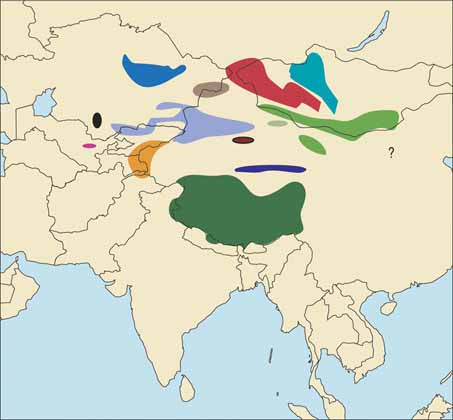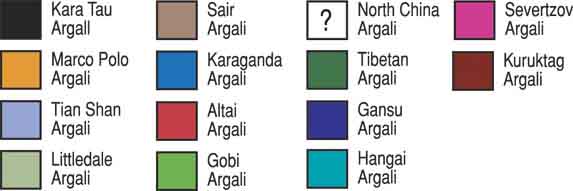 |
 |
Ovis ammon severtzovi
Also called Kizil Kum sheep. Named after N. A. Severtzov, one of the foremost Russian biologists of the 19th century, who discovered it in 1873.
DESCRIPTION The smallest argali. Shoulder height (male) 34-38 inches (86-97 cm). Females are smaller.
Winter coat is dark brown above, slightly paler on the neck, and grayish-brown on flanks and tail. The head is darker than the neck. Rump patch, belly and muzzle are white. Lower legs are dirty white except for dark, reddish-brown stripes on the fronts. The white neck ruff is short (one inch, or 2.5 cm) and tinged with gray. No saddle patch or bib. Horns are homonymous and strongly corrugated. The record horns were taken by explorer-naturalist Douglas Carruthers in 1908 and now are part of the International Collection of Heads and Horns in the International Wildlife Museum in Tucson.
DISTRIBUTION Uzbekistan, in the Nura Tau range in the southern part of the Kizil Kum desert, northwest of Samarkand.
TAXONOMIC NOTES Morphologically, this sheep is intermediate between the urials and argalis, as it exhibits characteristics of both. For years it was classified as an argali by some authorities (including the USF&WS) and as an urial by others (including the IUCN). However in 1996, Lyapunova, Bunch, Voronsov and Hoffmann, working from blood and tissue samples obtained from rams taken by SCI member Donald G. Cox, determined that the Severtzov sheep is indeed an argali, with 56 chromosomes.
|





